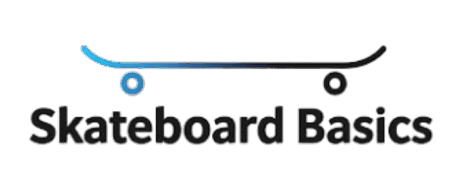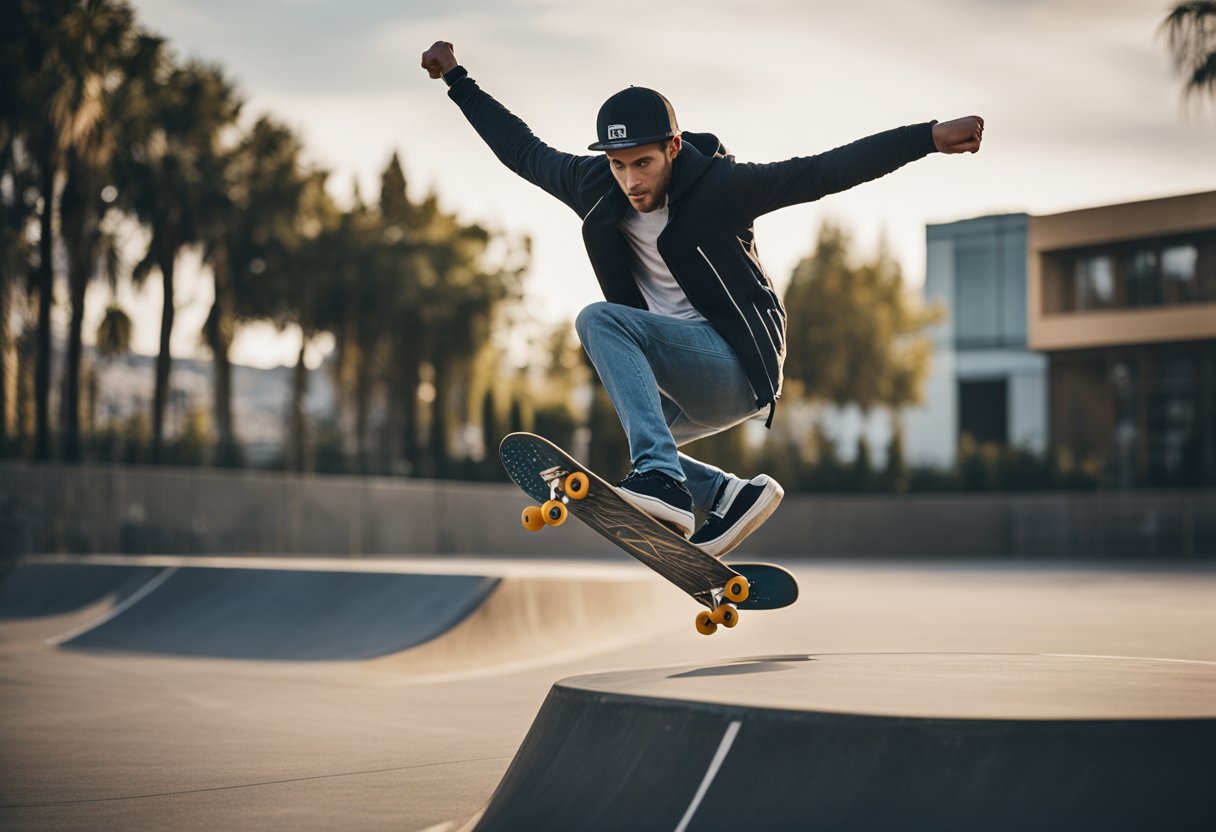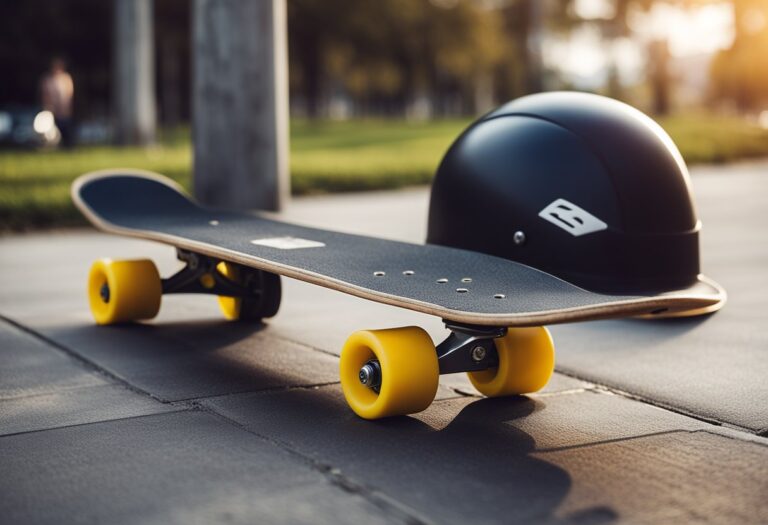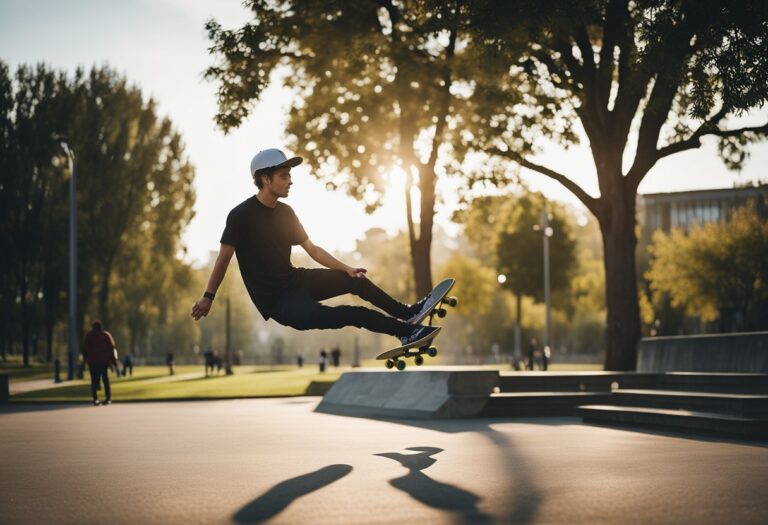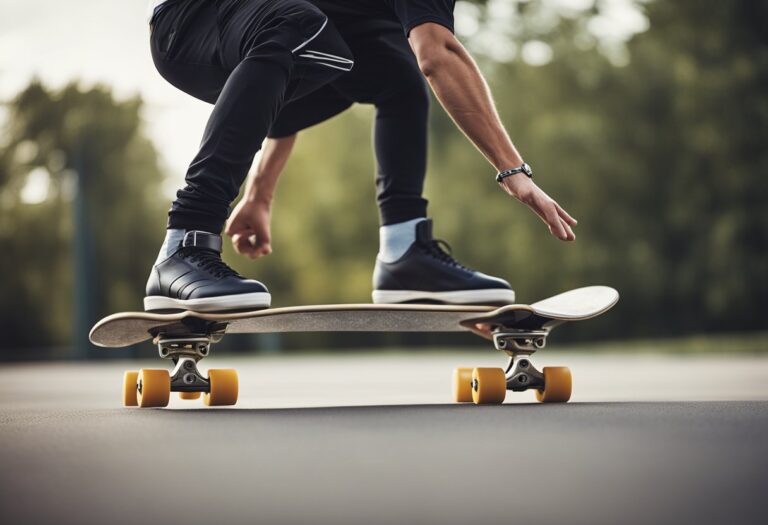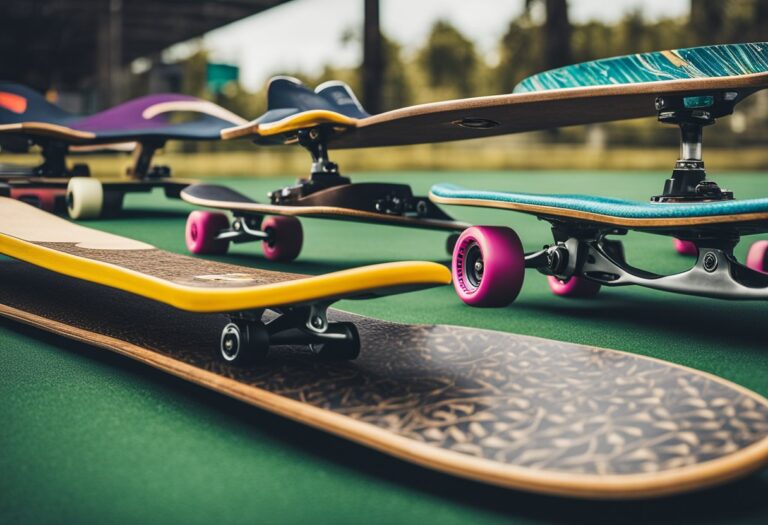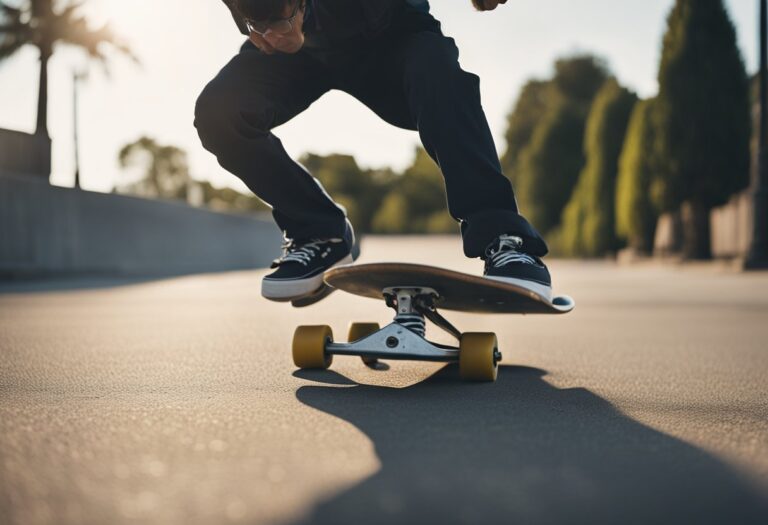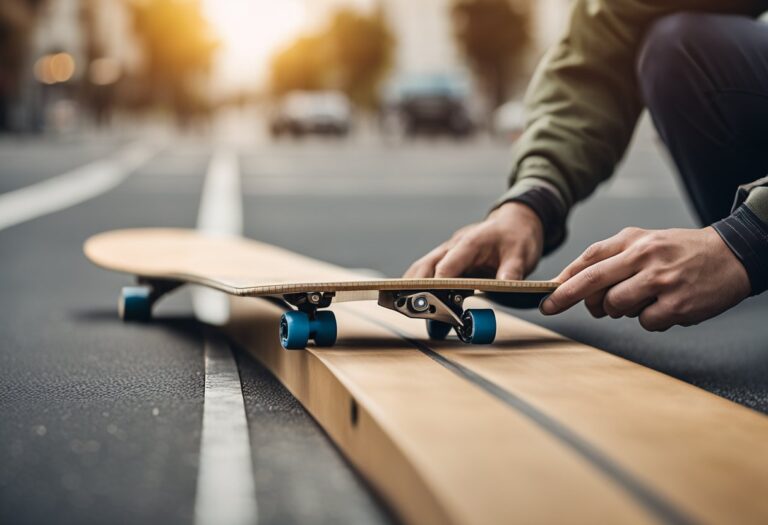Beginner’s Playbook for Skateboarding Success: Strategies and Exercises for Rapid Improvement
Skateboarding is a fun and exciting sport that can be enjoyed by people of all ages. However, for beginners, it can be quite challenging to get started and improve their skills. That’s why having a beginner’s playbook for skateboarding success can be extremely helpful. This playbook provides strategies and exercises to help beginners rapidly improve their skills and become confident skateboarders.

Getting started with skateboarding can be overwhelming, especially if you don’t know where to begin. However, with the right guidance, it can be a lot easier than you think. This article will cover the fundamentals of skateboarding, essential skills to master, conditioning and exercises to improve your performance, and progressive training techniques to take your skills to the next level. Additionally, it will cover advanced maneuvers and tricks, how to maintain your skateboard, and the importance of the skateboarding community and culture.
Key Takeaways
- The beginner’s playbook for skateboarding success provides strategies and exercises to help beginners rapidly improve their skills and become confident skateboarders.
- The playbook covers the fundamentals of skateboarding, essential skills to master, conditioning and exercises to improve your performance, progressive training techniques, advanced maneuvers and tricks, how to maintain your skateboard, and the importance of the skateboarding community and culture.
- With the right guidance and continuous improvement, anyone can become a skilled and confident skateboarder.
Getting Started with Skateboarding

Skateboarding can be an exciting and rewarding activity for beginners, but it’s important to get started on the right foot. Here are some tips for beginners to start off their skateboarding journey.
Choosing the Right Skateboard
Choosing the right skateboard is crucial for beginners. It’s important to choose a skateboard that suits your needs and skill level. There are different types of skateboards available in the market, such as longboards, cruisers, and street skateboards.
For beginners, it’s recommended to start with a street skateboard as it’s the most versatile type of skateboard. When choosing a skateboard, consider the width, length, and shape of the board. A wider board provides more stability, while a narrower board is easier to maneuver.
Understanding Skateboard Anatomy
Before getting started, beginners should familiarize themselves with the anatomy of a skateboard. A skateboard consists of several parts, including the deck, trucks, wheels, bearings, and hardware. Each part plays a crucial role in the performance of the skateboard.
The deck is the flat board that the rider stands on. It’s important to choose a deck that’s the right size and shape for your needs. The trucks are the metal parts that connect the wheels to the deck. The wheels and bearings determine the speed and smoothness of the ride.
Safety Gear and Equipment
Safety gear is an essential part of skateboarding. Beginners should always wear a helmet, elbow pads, knee pads, and wrist guards to protect themselves from injuries. It’s also important to wear appropriate shoes with good grip and ankle support.
In addition to safety gear, beginners should also have the necessary equipment for skateboarding. This includes a skateboard tool for adjusting the trucks, spare bearings, and wheels, and a backpack to carry the skateboard and gear.
By following these tips, beginners can get started on their skateboarding journey with confidence and safety.
Fundamentals of Skateboarding

Skateboarding is a fun and challenging sport that requires a certain level of skill and technique. Before attempting any advanced tricks, it is essential to master the fundamentals of skateboarding. In this section, we will discuss the basic riding techniques, turning and stopping, and skatepark etiquette.
Basic Riding Techniques
The first step to becoming a successful skateboarder is to learn the basic riding techniques. These techniques include:
- Stance: The rider should stand with their feet shoulder-width apart, with one foot placed on the tail of the board and the other foot placed near the middle of the board.
- Pushing: The rider should push off with their back foot to gain momentum. The front foot should remain on the board.
- Balancing: The rider should keep their weight centered over the board to maintain balance.
- Rolling: The rider should keep their knees bent and use their body weight to control the direction of the board.
Turning and Stopping
Turning and stopping are essential skills that every skateboarder should master. These skills include:
- Turning: To turn, the rider should shift their weight to the front or back foot while leaning in the direction they want to turn.
- Stopping: To stop, the rider should drag their back foot on the ground or use the tail of the board to come to a stop.
Skatepark Etiquette
Skatepark etiquette is essential to ensure a safe and enjoyable experience for all skateboarders. Here are some basic rules to follow:
- Respect other skaters: Always be aware of other skaters and give them plenty of space to ride.
- Wait your turn: Wait for your turn to use the obstacles and ramps.
- Keep the park clean: Pick up any trash and put it in the designated bins.
- Wear protective gear: Always wear a helmet and other protective gear to prevent injuries.
By mastering the fundamentals of skateboarding, riders can progress to more advanced techniques and tricks. Remember to always practice in a safe and controlled environment and to have fun while learning.
Essential Skateboarding Skills

Skateboarding is a sport that requires a combination of balance, coordination, and skill. To become a successful skateboarder, one must master the essential skills required for the sport. This section will discuss some of the essential skateboarding skills that every beginner should learn.
Ollies and Nollies
Ollies and nollies are the foundation of skateboarding. They are the basic tricks that every skateboarder should learn before moving on to more advanced tricks. An ollie is a trick where the skateboarder jumps into the air while lifting the skateboard off the ground. A nollie is similar to an ollie, but the skateboarder jumps off the nose of the skateboard instead of the tail.
To perform an ollie or nollie, the skateboarder must first learn how to pop the skateboard off the ground using their back foot. They then use their front foot to level out the skateboard in mid-air before landing back on it. These tricks require practice and patience to master, but they are essential for any skateboarder looking to improve their skills.
Kickflips and Heelflips
Kickflips and heelflips are two of the most popular tricks in skateboarding. They involve flipping the skateboard in mid-air using the front foot while jumping off the back foot. A kickflip involves flipping the skateboard with the toes, while a heelflip involves flipping it with the heel.
To perform a kickflip or heelflip, the skateboarder must first learn how to pop the skateboard off the ground using their back foot. They then use their front foot to flip the skateboard in the desired direction while jumping off the back foot. These tricks require a lot of practice and patience to master, but they are essential for any skateboarder looking to improve their skills.
Manuals and Grinds
Manuals and grinds are two of the most technical tricks in skateboarding. A manual involves balancing on the back wheels of the skateboard while rolling forward, while a grind involves sliding the skateboard along a rail or ledge.
To perform a manual or grind, the skateboarder must first learn how to balance on the back wheels of the skateboard. They then use their body weight to maintain balance while rolling forward or sliding along a rail or ledge. These tricks require a lot of practice and patience to master, but they are essential for any skateboarder looking to improve their skills.
In conclusion, mastering these essential skateboarding skills is crucial for any beginner looking to improve their skills. With practice and patience, anyone can become a successful skateboarder.
Conditioning and Exercises

Strength Training for Skateboarders
Skateboarding requires a lot of physical strength, especially in the legs and core. To improve your strength, try incorporating exercises such as squats, lunges, and calf raises into your workout routine. These exercises will help you build the necessary muscles to perform tricks and maintain balance on your board.
Another great exercise for skateboarders is the plank. This exercise targets the core muscles, which are essential for maintaining balance and stability on the board. To perform a plank, start in a push-up position and hold your body in a straight line for as long as possible.
Balance and Coordination Drills
Balance and coordination are crucial skills for skateboarders. One way to improve your balance is by practicing standing on one foot for an extended period. Start by standing on one foot for 30 seconds and gradually increase the time as you improve.
Another great exercise to improve your balance is the balance board. This tool simulates the motion of skateboarding and helps you develop better balance and coordination. Start by standing on the balance board with both feet and gradually progress to standing on one foot.
Flexibility and Mobility Workouts
Flexibility and mobility are important for preventing injuries and improving performance. To improve your flexibility, try incorporating stretches such as the butterfly stretch and the hamstring stretch into your routine. These stretches will help you maintain a full range of motion and prevent muscle tightness.
Another great way to improve your flexibility and mobility is by practicing yoga. Yoga can help you develop better balance, flexibility, and core strength, all of which are essential for skateboarding.
By incorporating these conditioning and exercise strategies into your routine, you can improve your strength, balance, coordination, flexibility, and mobility, ultimately leading to rapid improvement in your skateboarding skills.
Progressive Training Techniques

Setting Achievable Goals
One of the keys to success in skateboarding is setting achievable goals. Beginner skateboarders should start with small goals and then gradually increase the difficulty level as they improve their skills. For example, a beginner might start by simply riding their board for a few feet without falling off. Once they have achieved this, they can set a new goal to ride for a longer distance or to make a turn without losing balance.
It is important to remember that setting unrealistic goals can lead to frustration and disappointment. By setting achievable goals, beginner skateboarders can build their confidence and motivation to continue practicing.
Structured Practice Sessions
Structured practice sessions are essential for rapid improvement in skateboarding. Beginner skateboarders should focus on specific skills during each practice session. For example, a practice session might focus on learning how to ollie or how to perform a specific trick.
It is also important to take breaks during practice sessions to avoid burnout. Beginner skateboarders should aim to practice for short periods of time (e.g. 15-20 minutes) and then take a break before continuing.
Overcoming Mental Blocks
Many beginner skateboarders struggle with mental blocks that prevent them from trying new tricks or techniques. To overcome these mental blocks, it is important to practice visualization techniques. Beginner skateboarders should visualize themselves successfully performing the trick or technique before attempting it in real life.
It is also important to have a positive attitude and to not give up after a few failed attempts. Beginner skateboarders should remember that failure is a natural part of the learning process and that persistence is key to success.
Advanced Maneuvers and Tricks

Skateboarding is a sport that requires skill, dedication, and practice. Once you have mastered the basic techniques, you can move on to advanced maneuvers and tricks. In this section, we will cover some of the most popular advanced techniques and tricks.
Vert Skateboarding Basics
Vert skateboarding is a type of skateboarding that involves riding on a vertical ramp or halfpipe. It requires a lot of skill and practice to master, but it can be a lot of fun once you get the hang of it.
Some of the basic techniques you will need to learn for vert skateboarding include dropping in, pumping, and carving. Dropping in involves riding down the ramp from the top, while pumping involves using your body to generate speed. Carving involves making turns on the ramp while maintaining your speed.
Street Skateboarding Tricks
Street skateboarding is a type of skateboarding that involves performing tricks on urban obstacles such as stairs, rails, and ledges. It requires a lot of creativity and skill to master, but it can be a lot of fun once you get the hang of it.
Some of the most popular street skateboarding tricks include ollies, kickflips, and grinds. Ollies involve jumping with the skateboard, while kickflips involve flipping the board with your feet. Grinds involve sliding along an obstacle with the trucks of your skateboard.
Transition Skateboarding Skills
Transition skateboarding is a type of skateboarding that involves riding on a variety of surfaces such as bowls, pools, and pipes. It requires a lot of skill and practice to master, but it can be a lot of fun once you get the hang of it.
Some of the basic techniques you will need to learn for transition skateboarding include dropping in, carving, and pumping. Dropping in involves riding down the ramp from the top, while carving involves making turns on the ramp while maintaining your speed. Pumping involves using your body to generate speed.
Overall, mastering advanced maneuvers and tricks in skateboarding takes time, practice, and dedication. It is important to start with the basics and work your way up to more advanced techniques. With patience and persistence, anyone can become a skilled skateboarder.
Maintaining Your Skateboard

Skateboarding can be a lot of fun, but it requires regular maintenance to keep your board in tip-top shape. In this section, we’ll cover some essential tips for maintaining your skateboard.
Cleaning and Lubrication
Keeping your skateboard clean is crucial for its longevity and performance. Dirt and debris can cause the bearings to slow down, and the grip tape to lose its grip. Regular cleaning can help to prevent this.
To clean your skateboard, use a soft-bristled brush to remove any dirt and debris from the grip tape. Then, wipe down the deck, trucks, and wheels with a damp cloth. You can also use a skateboard-specific cleaner to remove stubborn dirt and stains.
Lubrication is also important for keeping your skateboard running smoothly. Use a skateboard-specific lubricant to lubricate the bearings regularly. This will help to keep them spinning smoothly and prevent them from rusting.
Replacing Skateboard Parts
As you skate, your skateboard’s parts will wear down and need to be replaced. The most common parts that need replacing are the wheels, bearings, and grip tape.
When replacing your skateboard’s parts, make sure to choose high-quality parts that are compatible with your board. If you’re not sure which parts to choose, ask a professional for advice.
Skateboard Customization
Customizing your skateboard can be a fun way to make it your own. You can customize your board with stickers, grip tape designs, and colored wheels.
When customizing your board, make sure to choose high-quality products that won’t damage your board. Avoid using stickers or grip tape that can peel off and cause damage to your board’s surface.
By following these maintenance tips, you can keep your skateboard in great condition and enjoy skating for years to come.
Community and Culture

Skateboarding is more than just a sport or a hobby, it’s a culture. Being a part of the skateboarding community can be a great way to improve your skills and make new friends who share your passion. Here are some ways to get involved in the skateboarding community:
Connecting with Other Skateboarders
One of the best ways to improve your skateboarding skills is to spend time with other skateboarders. Whether it’s at your local skatepark or through social media, connecting with other skateboarders can help you learn new tricks, get feedback on your technique, and find inspiration for your own style.
Skateboarding Events and Competitions
Attending skateboarding events and competitions can be a great way to meet other skateboarders and get inspired by their skills. Watching the pros in action can also help you learn new tricks and techniques that you can incorporate into your own skating.
Supporting Local Skate Shops
Skateboarding culture is deeply rooted in supporting small, local businesses. By shopping at your local skate shop, you can help support the skateboarding community and ensure that there are always places for skateboarders to gather and practice their skills. Plus, local skate shops often have a wealth of knowledge about the best skate spots in the area and can provide recommendations for gear and equipment that will help you improve your skating.
In conclusion, being a part of the skateboarding community can be a great way to improve your skills, make new friends, and get involved in a culture that is passionate about skateboarding. By connecting with other skateboarders, attending events and competitions, and supporting local skate shops, you can become a valuable member of the skateboarding community and take your skating to the next level.
Continuous Improvement

Becoming a successful skateboarder requires continuous improvement. This section will provide some strategies for achieving this.
Learning from Mistakes
Mistakes are an inevitable part of learning any new skill, including skateboarding. However, the key to rapid improvement is to learn from these mistakes. Skaters should take the time to analyze their mistakes and identify what went wrong. This will help them avoid making the same mistakes in the future.
Staying Motivated and Inspired
Skateboarding can be a challenging and frustrating sport, but it’s important to stay motivated and inspired. Skaters should set achievable goals and celebrate their accomplishments along the way. They should also seek out inspiration from other skaters, whether it’s by watching videos online or attending local skateboarding events.
Exploring New Skateboarding Styles
Finally, skaters should explore new skateboarding styles to keep things fresh and interesting. This could involve trying out different types of skateboards, such as longboards or cruisers, or experimenting with new tricks and techniques. By constantly pushing themselves outside of their comfort zones, skaters can continue to improve and grow as skateboarders.
Frequently Asked Questions

What are the essential skateboarding skills for a beginner to focus on?
For beginners, it is important to focus on mastering the basics of skateboarding. This includes learning how to balance, push, turn, and stop. Once these skills are mastered, beginners can move on to more advanced tricks and maneuvers.
Which balance exercises are most effective for new skateboarders?
Balance is a crucial aspect of skateboarding, and there are many exercises that can help beginners improve their balance. Some effective exercises include standing on one foot, balancing on a balance board, and doing squats on a skateboard.
How can I improve my skateboarding technique as a beginner?
The best way to improve your skateboarding technique is to practice regularly and seek guidance from experienced skateboarders. Watching instructional videos and attending skateboarding clinics can also be helpful.
What are the best strategies for rapid improvement in skateboarding?
To improve rapidly in skateboarding, beginners should focus on practicing consistently, setting achievable goals, and pushing themselves to try new tricks and maneuvers. They should also seek feedback from experienced skateboarders and be willing to learn from their mistakes.
What should a beginner skateboarder practice to get good quickly?
Beginner skateboarders should practice the basics of skateboarding, such as balancing, pushing, turning, and stopping. They should also work on building their confidence and gradually progressing to more advanced tricks and maneuvers.
Are there specific exercises to enhance skateboard balance for new riders?
Yes, there are many exercises that can help new riders improve their balance on a skateboard. Some effective exercises include standing on one foot, balancing on a balance board, and doing squats on a skateboard.
